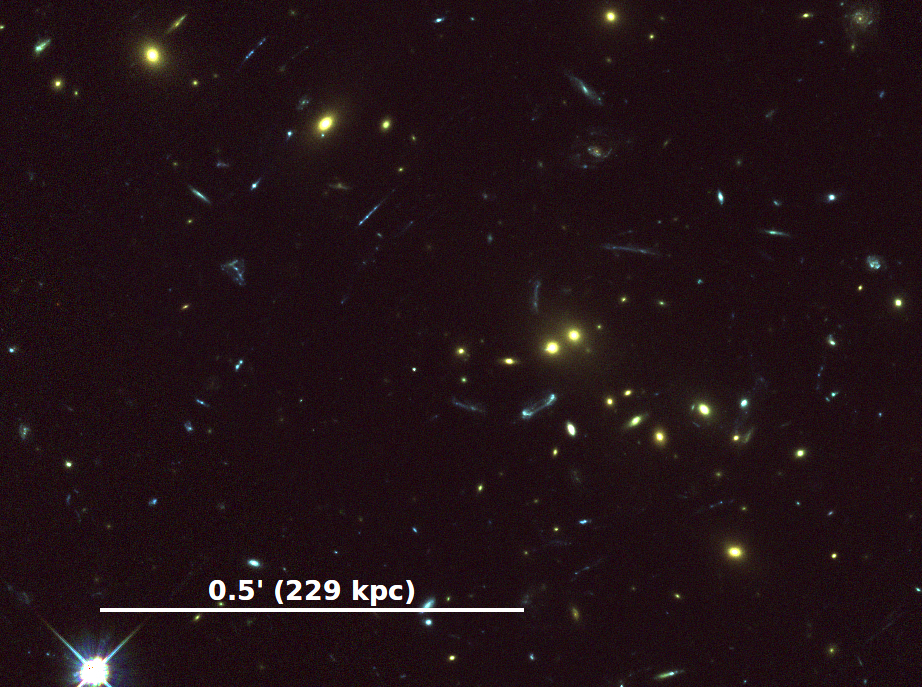
Astronomers clarify the role of the environment in the evolution of galaxy clusters
Clusters are among the larger systems of galaxies in the universe and are ideal for this type of studies. In each cluster are thousands of galaxies hosted in a limited volume, which facilitates interactions that cause changes in both the structure and the star formation activity in these galaxies. In general the mass of the galaxies and the environment in which they are located contribute to regulate the level of star formation.
The more massive galaxies or the ones surrounded by other galaxies, just form stars faster and are moving from a regime of high to low or no star formation (passive galaxies) in a lower time than in less dense environments. These galaxies look red when observing with a telescope.
Despite the dense environment of clusters, with many galaxies concentrated in a limited space, it is not entirely clear whether the mass or the environment is primarily responsible for the exhaustion of star formation. This caused a dispute among astronomers who found that the mass was mainly responsible and astronomers who claimed that the environment was the most important factor in determining the speed of changes in galaxy clusters.
That is why two astronomers from the University of Concepcion, P. Cerulo and R. Demarco with the chilean and international researchers; Couch, W. J.; Lidman, C.; Huertas-Company, M.; Mei, S.; Sánchez-Janssen, R.; Barrientos, L. F; Muñoz, R. P. collaborated on the task of resolving this debate.
“With this work we have not ruled any of the scenarios, but we have shown that the disagreement could be caused by differences between the samples used by the various authors”, says Dr. Cerulo.
To reach these conclusions, the research group observed a sample of distant clusters, (redshift z=1 or about 22,000 million light years) and compared them with nearby clusters (z=0). By the fact that light travels at a finite speed, such a comparison allows to study the differences between galaxies as they existed 8 billion years ago and as they are today. “Through the comparison between distant and nearby clusters we have found a negligible difference between the luminosities distributions of red and passive galaxies of the two samples, and we have concluded that star formation had already been finished in galaxy clusters 8000 million years ago”, says Cerulo.
The authors also compared the galaxies of distant clusters with galaxies from less dense environments (field galaxies) at the same distance from the clusters. This comparison showed that in low dense environments star formation in low-mass galaxies is still ongoing, suggesting that exhaustion of star formation happens more quickly in field clusters. The researchers propose that the mass of the clusters can be an important factor in determining the speed of galaxy transformation from the regime of high to low star formation rate. “Our results suggest that galaxies in more massive clusters spend less time from the high formation rate to little or no star formation than in less massive clusters. This conclusion needs to be tested using a sample of larger clusters, sample that we are currently establishing”, concludes Cerulo.
To obtain these results, the research team took existing data files from observatories archives (HST, VLT) and supplemented with new data obtained during the years 2011 and 2012 with the Keck Observatory and with the Gemini North Observatory in Hawaii.
The final article from this research was published in the journal Monthly Notices of the Royal Astronomical Society (Volume 457, Issue 2, p.2209-2235 (MNRAS Homepage)





